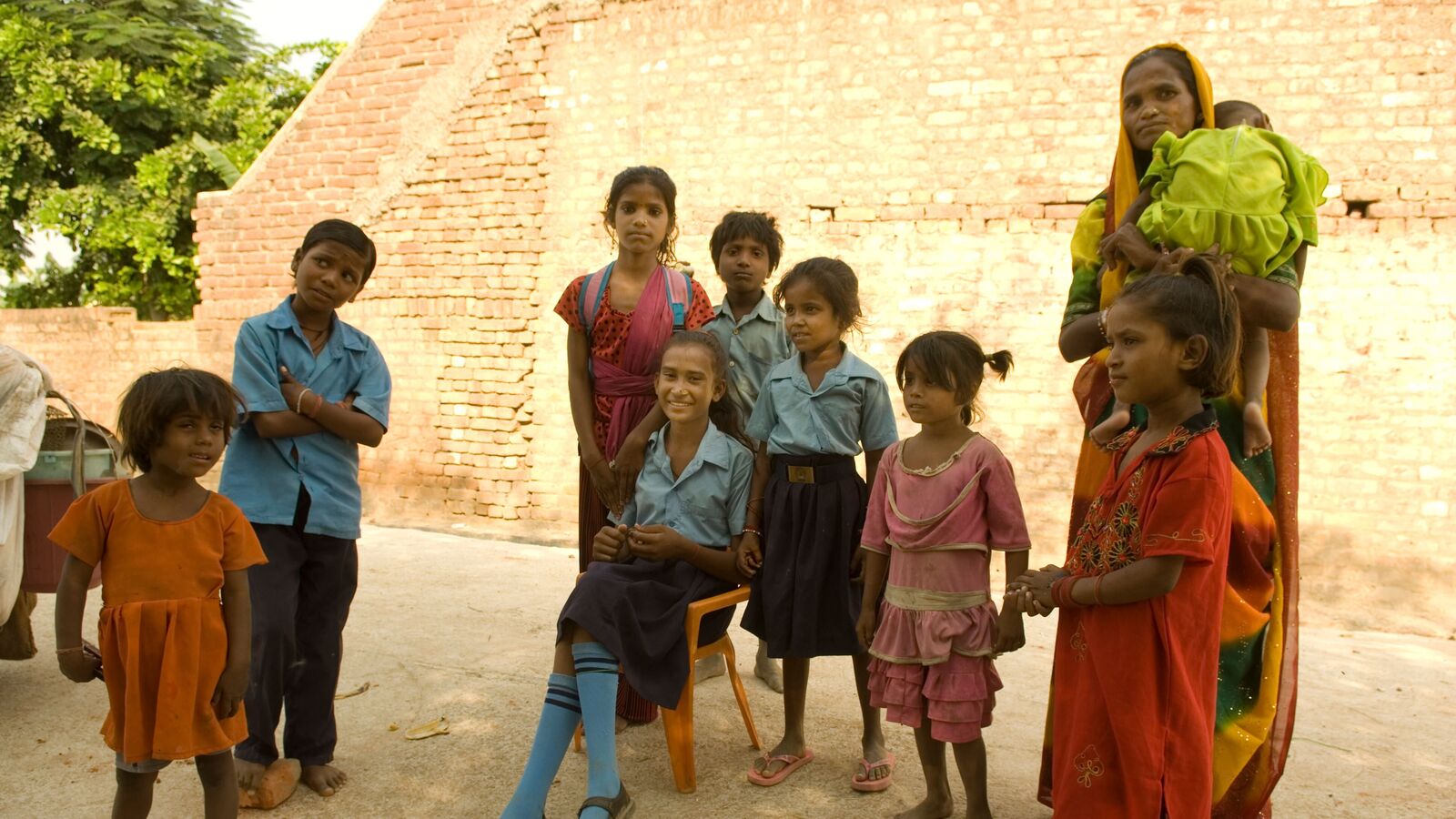A busy railway line runs parallel to the southern bank for most of the stretch, and a road on the northern bank. The highway above covers the entire width of the gorge. From the high-speed six-lane highway, the gorge with the sewer in the middle is not visible because it is right underneath.
Swirling dark muck flows fast in the sewer. It is the worst of the waste from a city of over 2 million people. The stench is thick and settled. Over 2,000 families live on the slopes of the gorge. In shanties made of discarded plastic, metal sheets and rotting wood.
The sewer overflows during monsoon rains, so the shanties are only up to half the distance down the naked slopes, with no obstruction to the eye, stark from both banks of the gorge. At intervals along the sewer, frayed saris can be seen wrapped around four bamboo sticks dug in the ground to form a two-by-two square foot toilet.
Outside the gorge, even those who live nearby believe that the shanties house hooch-makers, drug-peddlers and other petty criminals. But if you do not judge from the high banks and brave a descent into the gorge, you will meet the typical poverty-stricken Indian.
A labourer, traffic signal-vendor or a beggar, doing what it takes to survive. There must be a few criminals amid them, but unlikely to be any more than in the swanky high-rises that are visible from parts of that gorge.
Why do these families live there? Because nobody chases them away. Not the police, not land sharks, not even the good Samaritans who want to keep the city clean. The sewer is their sanctuary.
Anywhere else in the city—under a flyover, on footpaths, beside a railway line, or anywhere else—someone or the other hounds them because land is gold in the city. But why live there at all? Because back in their villages, they can’t even eke out that one meal that fends off starvation.
Majestic is the expanse of our holiest river. It is visible from that elevated highway. Its waters are not like the sewer’s, but the devout likely trade sin for disease when they wash in it. The water is clean, but its banks are not—not even a thousand kilometres upstream at one of the country’s sacred pilgrimage centres.
From another gleaming highway, we can see muck-laden banks with familiar plastic-metal-wood shanties. Poverty chased the inhabitants of these out of their villages, but no one chases them off these mucky banks, so long as they voluntarily vacate every time a mela or fair is held, major or minor.
A piety-fuelled construction boom in the vicinity gives them some daily-wage work. Or at least they have the safety net of alms from the everyday thousands who come to take a dip in the holy river.
Children don’t go to school, neither from the sewer zone, nor from the mucky banks. They are not given admission, and if they are, it’s too dangerous to cross the busy railway line or highway. Families don’t have ration-cards—which means they have no access to the public distribution system of grains.
Most have no documents to access India’s public health schemes. Water to drink is a daily struggle and acquiring it takes away their earnings or work-hours or both. Temples are out of bounds. Births are fraught, with no access to the public health system, and private delivery unimaginably beyond reach. Death demands funereal dignity, often resulting in a slide deeper into poverty for family members left alive.
Two thousand kilometres south of this place of pilgrimage, from another spanking highway hugging another drain of urban waste, one can see a series of the same plastic-metal-wood shanties.
It’s just another mid-sized city, where the precarity of livelihood is less (if only infinitesimally so) than in their villages, yet sufficient to offer them the hope of a higher chance of survival. Which is the case across all our cities, and why these shanties are everywhere.
What was once a phenomenon of our large cities has spread to most small and mid-sized urban centres. But these are not slums. Perhaps ultra-slums, much further down the precipice of life. If we don’t create enough decent jobs and livelihood opportunities, and ensure they’re distributed evenly across India, the core problem will not be addressed.
It doesn’t appear that we know how to do that, not only as a nation but even globally. Acknowledging that we don’t know may be a start for the kind of deep efforts that are required on every dimension—from research and policy to action on the ground and business.
But this doesn’t mean that in the meanwhile we don’t do the most basic of things for the poorest of our people. If we can have high-speed highways for our cars, why should they not have food, water, basic health and education? We have welfare systems for most of these, but residents of ultra-slums have almost no access to them. We must change that. Sewers need not be sanctuaries for fellow citizens.
#Ultraslum #dwellers #access #welfare #provisions






